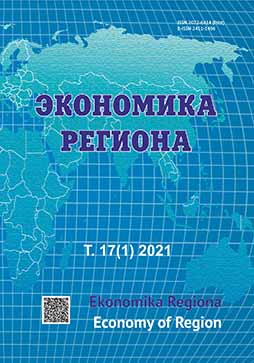Индекс активного долголетия в регионах Сибири
Active Ageing Index in Siberian Regions
Author(s): Elena Alexandrovna Frolova, Veronika MalaninaSubject(s): Economy
Published by: Институт экономики Уральского отделения Российской академии наук
Keywords: population ageing; Active Ageing Index; quality of life; regional inequality; Siberian Federal district; social activity; wellbeing; older adults; employment; rural-urban disparity in active ageing
Summary/Abstract: Considerable inequality among Russian regions is rooted in social and economic disparities, territorial distribution of production and resources, fiscal capacity and ethno-cultural characteristics. The Siberian Federal District includes regions with pronounced industry and demographic specificity, causing significant differences in the quality of life of the population in different age groups. We assess the parameters of active ageing depending on regional and territorial aspects to develop measures for establishing the active ageing policy, equalising the opportunities for the older generation to lead a productive life after reaching retirement age. We hypothesise that the differences in individual and social conditions shape the activities of older adults in urban and rural settlements. Based on the international methodology of the Active Ageing Index, we assessed the indicators of active ageing for urban and rural areas of the Siberian Federal District. We revealed some shortcomings of the original methodology and suggested relevant proxy indicators, compensating for the lack of data in Russian statistics. The mean Active Ageing Index for the Siberian Federal district is 26.41 for urban and 23.91 for rural areas. The maximum value of the Active Ageing Index among macro-regions of Russia is 32.2 in the Northwestern Federal District; the maximum among European countries is 44.9 in Sweden. The value of employment indicator in urban areas in Siberia exceeds the rural one by 8 percentage points. However, the parameter of participation in society is lower by 3.5 percentage points. In terms of opportunities for active ageing, this indicator is higher by 7 percentage points in urban areas, while values of the indicator of independent and secure living are almost the same in both areas. The study results may be applicable in the development of social policies promoting active ageing among rural population.
Journal: Экономика региона
- Issue Year: 17/2021
- Issue No: 1
- Page Range: 209-222
- Page Count: 14
- Language: Russian

